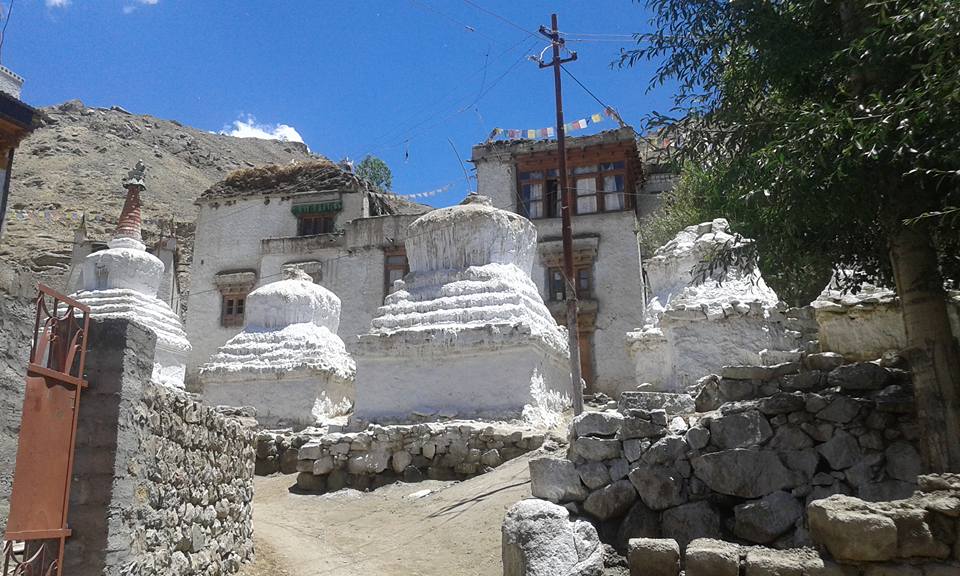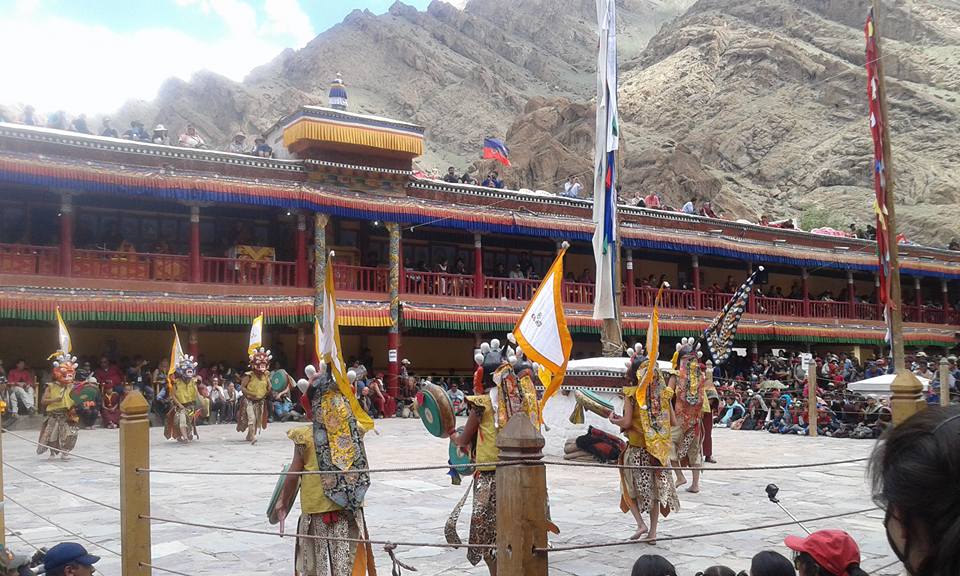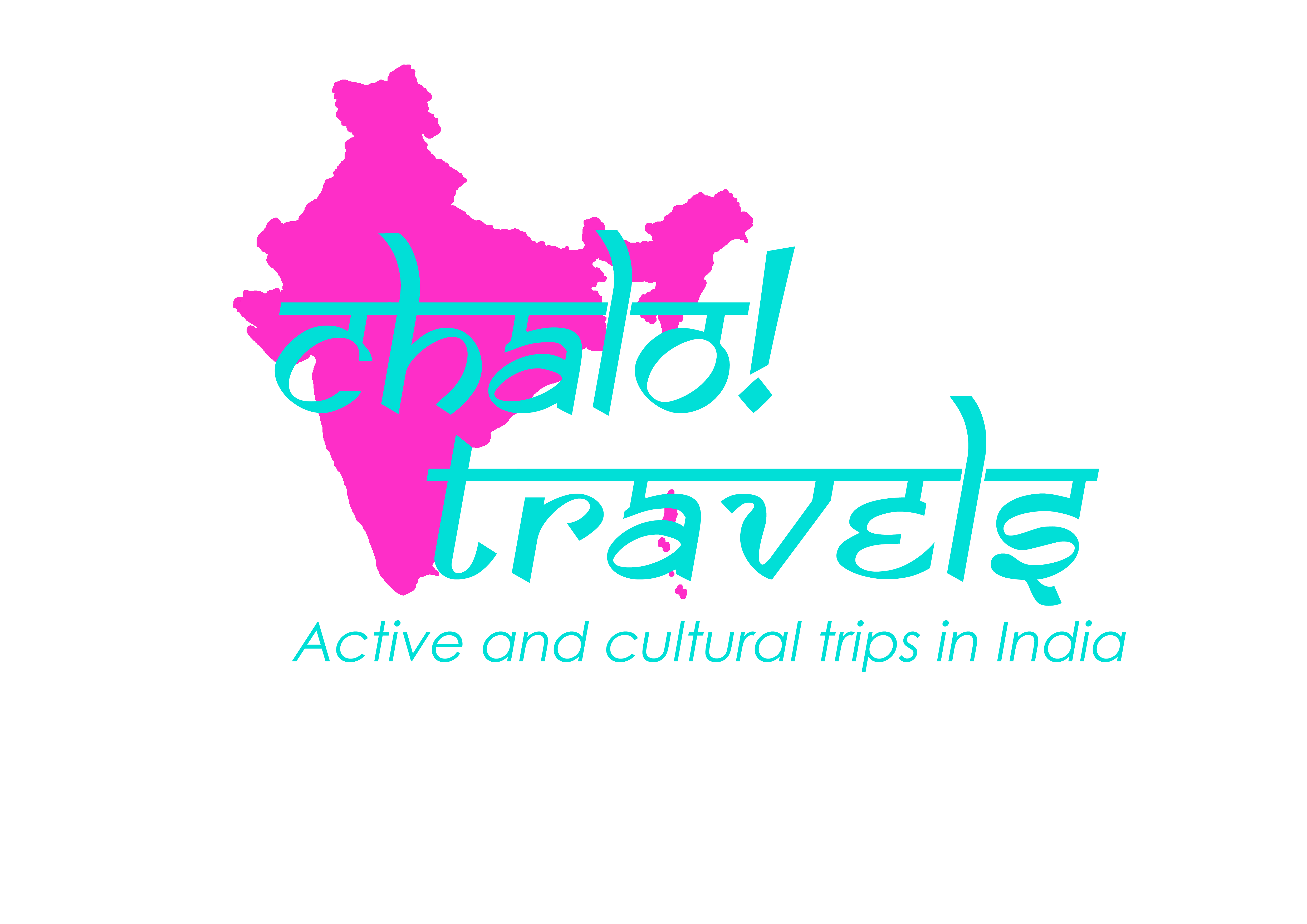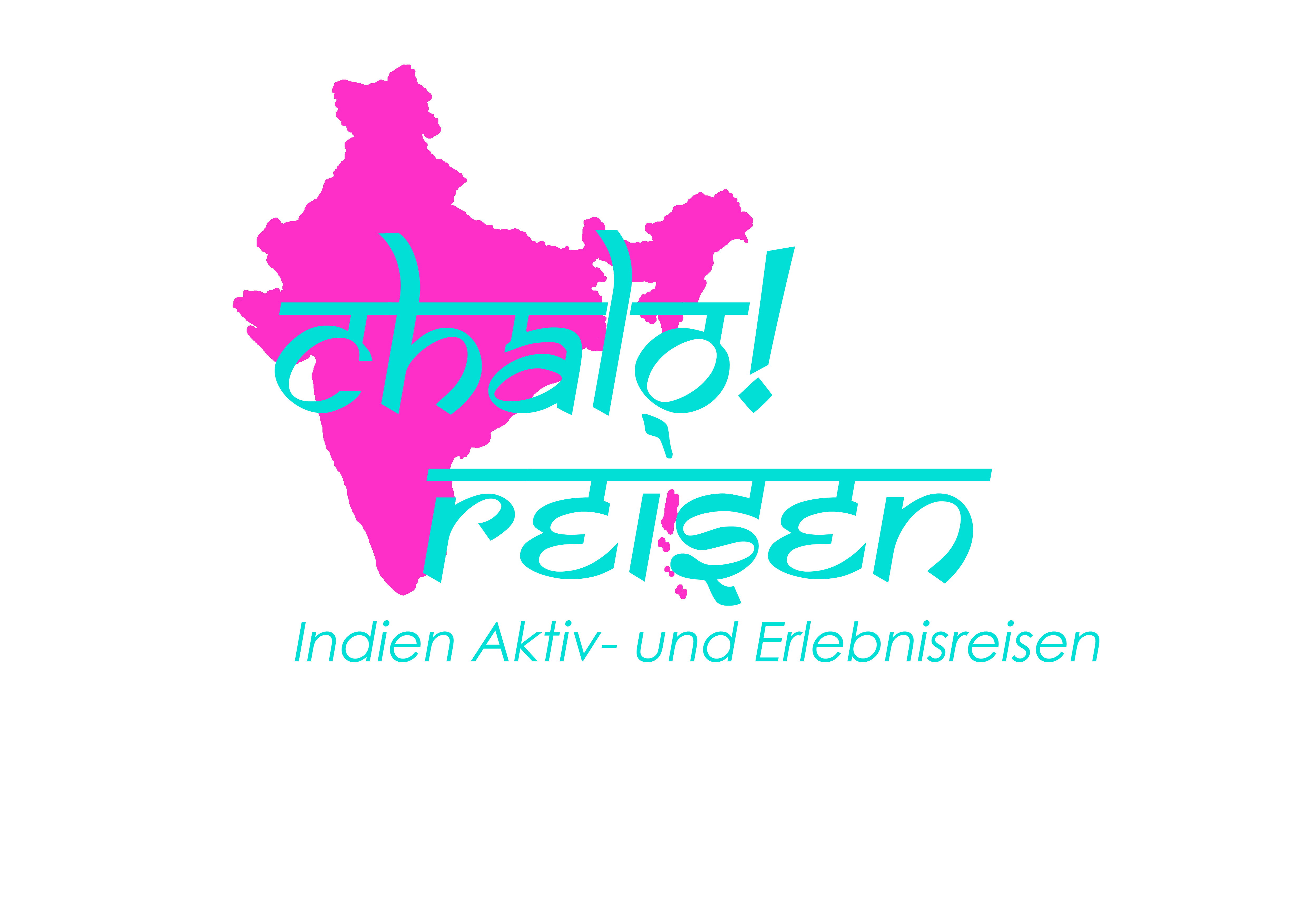- Sport & Abenteuer Reisen
- Trekking Reisen
Overview
This unique trekking trip to the Buddhist high mountain region of Ladakh is a combination of three very different trekking tours and a varied cultural program. After these three weeks you have not only experienced the Ladakh region in all its facets, but you will also have come into an intensive exchange with the local people, have enjoyed a magnificent mountain world and of course have done some nice treks.
Our “Base Camp” for all our activities and tours is the provincial capital Leh. At an altitude of 3500 meter it is centrally located and from here we will go star-shaped on our various adventures.
Leh marks the lowest point in this Himalaya Region. That means, that we have to acclimatize sufficiently in advance to master the quite demanding trekking tours, with some of them leading over 5000 meter passes.
So we start the journey with a two-day acclimatization tour to Lamayuru, 120 km away from Leh. On the way and in Lamayuru itself, magnificent Buddhist monasteries and wonderful little villages await us.
Afterwards we take the short two-day trek from Zingchen to Rumbak and continue over the 4800 m high Stok La to the village of Stok.
This trek not only promotes our Akklimatisation process, but we also have the opportunity to live in the idyllic village of Rumbak in the Hemis National Park in a quite traditional homestay.
The 4800 m high Stok La is the first physical challenge for us.
Now we are ready for the five-day trek over the 5450 m high Lasermo La Pass, which leads into the remote region of the Nubra Valley.
The trek follows an ancient Silk Road trade route on which the traders of India made their way to Zentral- Asia.
The Trek is challenging and unique. We will be accompanied by a trekking team consisting of mountain guides, cooks and load horses. We we stay in tents.
During the trekking tour into the Nubra valley, we will see the snow-capped peaks of the over 7000 meters high mountain giants.
Once we reached in the Nubra Valley, we enjoy a completely new landscape: sand dunes with camels! After a night in the hotel, you will return to Leh- Who likes, can the descent the legendary Kardung La Pass (5300 m, one of the highest passable passes in the world) on a mountain bike. What a fun!!
After a rest day in Leh (or a rafting tour on the Zanskar River) we go on to the next trekking tour: The Rumtse-Tsomoriri Trek. Seven Days of Trekking, two wonderful mountain lakes, 4 5000 meter high passes, nomadic people with yak and Pashmina goat herds and far-off mountain villages await us on this tent trek!
Back in Leh, one can truly claim, that the Ladakh region with all its beauties has been experienced to the fullest!
Program
Day 1 Self-oranized arrival to Leh
We will pick you up from the airport and take you to the hotel. After some rest we set off on a gentle exploration tour in Leh. In the evening we all get to know each other over a dinner together. Hotel Kidar (-/-/D)
Day 2-3 Excursion to Lamayuru and back to Leh (240 km)
We explore the famous Lamayuru and Alchi Monasteries and the villages on the way. An important tour to acclimatize. Overnight in Lamayuru at Hotel Moonland (B/-/D)
Day 4-5 Zingchen-Rumbok-Stok La (4800 m)-Stok Trek and transfer to Murobok
We cross the mighty Stok La Pass and stay in the beautiful village Rumbok. Overnight stay at the Homestay in Rumbok and in the tent camp in Murobok (B/L/D)
Day 6-10 Phyang- Lasermo (5450 m)-Hunder Trek
A challenging 5 days Trek following an ancient trading route and reaching into the remote Nubra Valley, after crossing the 5450 m high Lasermo Pass. Overnight stay during the trek in tents in Hunder at the Hotel Snow Leopard (B/L/D)
Day 11 Hunder – Leh (Bike tour from Khardung La Pass to Leh 34 km)
Enjoy the fun downhill from on of the highest motorable passes in the world all the way to Leh. Of course you can also stay in the car.
Overnight stay at Hotel Kidar (B/-/-)
Day 12 Rest day in Leh or rafting on the Zanskar River
You can either have a relaxed day in Leh with shopping, in nice cafes or attending yoga classes or join an exciting rafting trip.
Overnight stay at Hotel Kidar (B/L/-)
Day 13 -19 Rumtse Tsomoriri Lake Trek
More information about the Trek here. Overnight in tents (B/L/D)
Day 20 Korzok – Leh
Return to Leh (approx. 4 hours). Enjoy the landscape from the comfort of a car. Overnight at Hotel Kidar. (B/-/-)
Day 21 Transfer to airport and self-organized departure
Services
- English-speaking travel companion and Ladakhi Guide
- all transfers and transports
- all fees and permits
- 5 nights Hotel Kidar in Leh with breakfast
- 1 night Hotel Moonland in Lamayuru with breakfast and dinner
- 1 night Hotel Snow Leopard in Hunder with breakfast and dinner
- During the Trekking tours full board, load horses for trekking equipment and complete equipment
- Sand dunes and camel ride
- Bicycle tour Kardung la – Leh
- Rafting Tour with Lunch
- one dinner together in Leh
Arrival and departure to and from Leh (we are happy to assist with flight booking)own trekking clothes, backpack, sleeping bagTips (approx. 50 -100 € total)unmentioned meals (approx. 5 €)Visa (approx. 25€)Travel insurance (can be taken out through us)
Highlights

Horses 
Camp 
Nomade Camp 
Sheppard Man 
Hike 
Camp 
Buddha 
Shanti Stupas in Leh 
Leh 
Monks 
Hemis Festival 
Ladakh 
Pass 
River Crossing 
Trek Ladakh 
Pass
Prices and Dates
Fixed Date:
27.07.2025-16.07.2025
26.07.2026-15.07.2026
6-12 participants:
2350 € per person
Please enquirer for a private tour. Best time July-September.
Tour Info
Requirements
It is a challenging trekking trip in the high Himalayas with several 5000 meters of passes. A high fitness level and good trekking equipment (clothing and sleeping bag) is crucial. Every day it should be possible to walk 7-8 hours with 500-1000 meters of altitude in alpine terrain.
Information about the Trekking Tours with Chalo! Travels
Mountain guide and trekking team
On all our treks we have at least one (for larger groups of 6 participants two) trained local mountain guide. Our mountain guides have all completed at least the Indian mountaineering training, many of them have also completed the advanced courses.
They are familiar with the trekking routes and know the terrain excellently. All our mountain guides speak English.
In addition, there is a local team consisting of a cook (if the group consists of only two participants, the mountain guide also takes over the tasks of the cook), helpers, horsemen with horses or Nepalese porters, depending on the type of trek.
All our team members have been working with us for years, are very friendly and always strive to provide our guests with a great trekking experience. Their English (besides the Guide’s) is rather mediocre or non-existent, but this is not necessarily a hindrance to communicating with them.
Trekking routes
The trekking routes are designed according the skills of our guests and are all feasible for a person with a good fitness level, unless otherwise mentioned. The daily routes are between five and eight hours long (with breaks) and an average increase of around 500-800 metres of altitude is completed.
In between, rivers may have to be crossed. The paths are partly well developed, but sometimes also almost non-existent. On our trekking routes there are hardly any villages in between, so we will take enough food for the whole tour.
On our treks we cross passes, snow or glaciers. On steep slopes, we have safety equipment with us.
Daily routine (Depending on the length and intensity of the trek, the times may vary)
7: 00 am Get up with Tea
7:30-8:30 am Breakfast
7:00-9:30 am Dismantling of the camp
8:00- 9:30 am Start Trek
1:00 pm Lunch on the way
3:00-5:00 pm Arrival at the camp and camp construction
3:30-5:30 pm Snacks
7:00 pm Dinner
Altitude and altitude sickness
Altitude sickness is a very important topic that should not be underestimated, especially during our trekking tours in the Indian Himalayas. At altitudes above 3500 m, our body has to slowly get used to the low air pressure, which also causes less oxygen to enter our lungs. The first signs of altitude sickness are headaches, which are accompanied by dizziness, nausea, insomnia and loss of appetite. It becomes problematic when water accumulates in the lungs and brain and edema occurs. Then only the immediate descent to lower altitudes will help. To prepare for the heights on our treks, we will either spend a few nights at high altitudes before the trek or slowly ascend during the trek to acclimatize. If we notice that there are problems with our guests (each person is otherwise able to acclimatize, regardless of age, gender and fitness level), it may happen that either the entire group or the concerned participant descends/returns with a team. In addition, it makes sense to take an emergency drug for altitude sickness. For this, it is best to consult the pharmacy or the travel doctor. For certain treks we will also have oxygen with us.
Luggage
Each trekking participant is responsible for his own clothes and personal belongings. Depending on the trek, we are either with horses or porters. If we have load horses, one bag per participant can be loaded onto the horse. In the case of treks with porters, all personal luggage must be carried independently. Tents, sleeping bags, mattresses and food are carried by our porters.
For trekking tours with horses, a day backpack with space for the lunchbox, a water bottle and warm overcoat clothing should be taken with you. Here to the complete packing list for our trekking tours.
Packing list for trekking tours
- sleeping bag at least -10°C
- large backpack or soft carrying bag so that the load animals can carry the luggage
- Small carrying backpack for the day approx. 30-40 l with rain protection
- flashlight/headlamp
- 2 refillable water bottles
- hiking poles
- passport and passport copy
- camera with spare battery and memory card
- headgear as sun protection
- Good Sunglasses
- cap
- Scarf, Buff
- Gloves
- wind-proof trekking pants
- trekking pants
- Functional Underwear Long
- hiking boots
- socks thick and thin
- sneakers, sandals and/or slats
- windbreaker
- Warm Jacket
- fleece sweater/jacket
- Tshirts
- sunscreen, lip balm min. Protection 40
- fat cream
- water purification tablets (boiled and filtered water is provided)
- own medications for headaches, nausea, digestive problems, colds)
- bubble patches and dressing material
- own hygiene articles
- Toilets Paper
- hand disinfection
- sleeping bag
Meals
During the trek there will be a vegetarian full catering. Water is either boiled or we have a water filter with us.
Breakfast (daily selection):
- Coffee/Tea
- Oatmeal porridge/muesli/cornflakes/Indian porridge
- Indian breakfast
- Sliced fruit/vegetables
Lunch (mostly lunchbox), sometimes warm in the camp
- Sandwiches/Indian (rice, chapati, vegetables)/potatoes
- Juices
- Chocolate
- Fruit
Snacks
- Tea/coffee
- Cookies
- French fries/Indian snacks
Soup
Dinner (depending on the length of the Trek mix of Indian/Chinese/Continental)
- Vegetable dish
- Lentil dish
- Rice/noodles
- Chapati
- Salad
- Dessert
Accommodation and camp
We have very comfortable and spacious two-man tents. Our mattresses are practical but simple if there are problems with sleeping on hard surfaces, please take your own mattress with you or order from us. Our sleeping bags are freshly washed and have a very good quality with comfort zone up to -5°C/extreme zone up to -20° C. It is recommended to bring personal indoor sleeping bags.
In addition, we have a spacious dining tent with tables and chairs, a kitchen tent for the team and a toilet tent. For treks up to 4 people, the kitchen tent can also act as a dining tent at the same time.
For trekking tours with porters, we will take our smaller, lighter tents with us and do without a toilet tent.
Weather
In the Himalayas, temperatures fluctuate widely. While it can get warm up to 25°C during the day and the sun is not only warming, but also very intense (sun protection is a must), it can also cool down significantly below the minus-grade at night, especially in the months end of September and October, as well as in June. There may also be weather changes with snow on the passes.






